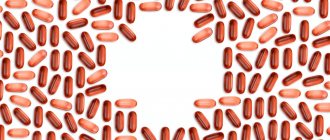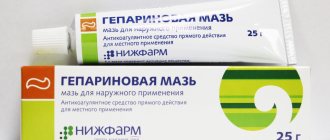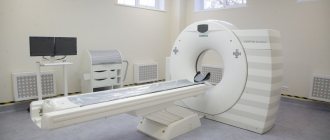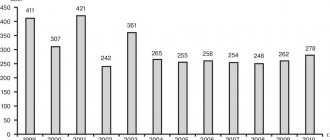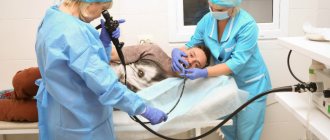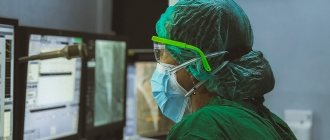A filled intragastric (intragastric) balloon occupies the internal volume of the stomach and leaves less space for food (about 100 ml). Already after a small portion eaten, the brain receives a signal of satiety. The amount of calories consumed is reduced to the lower physiological norm. The procedure is reversible - after achieving the treatment goals, the balloon is removed (to prevent wear of the walls under the influence of gastric juice - after 6 months). If necessary, 2 months after removing the old balloon, a new one can be installed.
Benefits of Gastric Ballooning
- It is performed without incisions - through the mouth and esophagus.
- Does not disrupt the physiology of the digestive tract and does not reduce the absorption of nutrients.
- Allows you to avoid relatively more severe bariatric surgeries, such as gastric suturing.
- The result of the procedure is based on natural reflex reactions and therefore does not require volitional efforts on the part of the patient.
- Aimed at normalizing eating behavior - a person gets used to eating in small portions.
- It is not accompanied by anesthetic and surgical risks.
- May be prescribed to patients with contraindications to bariatric surgery.
The disadvantage of this method is that ballooning may be less effective for weight loss compared to bariatric surgery.
Where can treatment with a balloon be performed?
First of all, such treatment should be carried out by a specialist working in the field of obesity treatment and who has undergone special training in the use of this technique. Manipulations associated with installation and especially removal of the balloon require the participation of a qualified endoscopist, as well as an anesthesiologist. Therefore, the use of this technique is most justified in clinics where these specialists are available. The Center for Endosurgery and Lithotripsy has all the conditions for carrying out such manipulations: a team of experienced surgeons, many years of experience in performing endoscopic operations, highly qualified doctors and nursing staff. It is important that all this is supported by the latest medical equipment from leading companies in Japan, the USA, and Germany, which makes a task of any complexity feasible. It is difficult to imagine the work of such a large multidisciplinary clinic as CELT, where more than 3,000 operations are performed per year, without the presence of a serious anesthesiology and resuscitation service. The combination of the vast practical experience of the department’s staff, modern equipment and the latest medications allows us to perform operations of any complexity at the safest level for patients. After the operation, the patient falls into the caring hands of doctors and nurses in the anesthesiology and intensive care unit. Their task is to eliminate the risk of postoperative complications, block postoperative pain, provide careful care for the patient and prepare him for transfer to a specialized department, under the supervision of the attending physician. The combination of all these factors suggests that CELT is one of the optimal places for surgical treatment of overweight patients.
Contraindications
- BMI ≤ 30.
- Anatomical restrictions due to previous operations.
- Acute gastrointestinal pathologies - esophagitis, ulcers, Crohn's disease, oncology.
- High risk of gastric bleeding - varicose veins of the esophagus or stomach, telangiectasia, stenosis, etc.
- Hiatal hernia.
- Diverticula and strictures of the esophagus and pharynx.
- Severe diseases of the kidneys, liver, lungs.
- Contraindications to gastroscopy.
- Alcoholism, drug addiction, mental disorders.
- Low discipline.
- Taking anticoagulants or steroids.
- Pregnancy and lactation.
- Age up to 18 years.
Preparation for the procedure
Before the procedure, the patient must undergo those examinations that are necessary for hospitalization and invasive treatment. The attending physician prescribes esophagogastroduodenoscopy (EGD) to identify possible contraindications.
The patient is hospitalized in the clinic for a day, during which he is prepared for manipulation under the supervision of medical personnel. The balloon insertion procedure takes no more than half an hour. After which the patient is observed for several hours, given nutritional recommendations and released for home treatment.
How does the procedure work?
The procedure can be performed without anesthesia, but in order to eliminate the patient’s emotional experiences, he is put into a medicated sleep. The balloon is placed under the control of a microvideo camera, which is inserted into the stomach through the esophagus. Medical pigment is added to the saline solution for timely control of leaks. The solution is injected with a syringe through a probe. When the required volume is reached, the valve is closed and the probe is removed. The duration of the procedure is up to 30 minutes.
If you notice that the urine has turned blue, then inform your doctor, he will make a correction. This situation does not pose any danger.
What is the technique of weight loss using balloons?
Treatment with intragastric balloons is a minimally invasive method of weight loss widely used in Western Europe. The complexity of the balloon installation technique is comparable to conventional gastroscopy. In this case, under the control of an endoscope, a balloon specially designed for this purpose is installed in the stomach, filled with 400-700 ml of liquid. By filling part of the stomach volume, the balloon promotes earlier satiety during meals, and due to quantitative restriction in food, the patient loses weight.
Who can be offered this treatment?
The treatment method using an intragastric balloon can be used in patients with a body mass index (body weight divided by height2) from 30 to 40 kg/m2. m., when surgical treatment is still premature, but there are already medical or socially determined indications for weight loss. Most often these are patients weighing 80-120 kg; more obese patients are usually offered more complex surgical treatments. Sometimes balloons are used to prepare hyperobese patients for surgical treatment. This technique can also be used to prepare overweight patients for operations with artificial circulation, arthroplasty, joint replacement, and hernia operations in cases where obesity makes it difficult to perform such operations.
What kind of excess weight loss can you expect using intragastric balloons?
Loss of excess body weight with this treatment method can vary from 3-4 to several tens of kilograms, and on average, according to our data, patients lose about a third of excess body weight.
What place does treatment with balloons take among other known methods of weight loss?
In terms of effectiveness, treatment with a balloon is superior to known conservative (non-surgical) treatment methods, but inferior to surgical methods (gastroplasty, gastric bypass, etc.). Therefore, in extreme forms of obesity, treatment using intragastric balloons cannot be considered as an alternative to more complex surgical treatment methods. In general, the technique seems very promising, since it is a very real chance to get rid of a significant part of excess body weight. However, those who suffer from severe forms of obesity should not overestimate the capabilities of this method; we recommend surgical treatment methods for them.
What are the design features of the cylinder itself?
The modern model of an intragastric balloon is made of biologically inert material - silicone. The liquid-filled balloon has a smooth surface, round shape, and easily adapts to the shape of the stomach. There is a small valve on its surface through which the container is filled with liquid and which prevents liquid from leaving the container. The intragastric balloon system from Inamed (USA), which is used in CELT, is certified by the Ministry of Health and approved for use in the Russian Federation.
Recovery period
If the patient wishes, he can leave the clinic after 2 hours. However, it is recommended to spend the first night in the clinic. To stop attacks of nausea and vomiting, the patient is administered antiemetic drugs.
In the first 3-4 days there may be a feeling of discomfort, then the body adapts and it goes away. During this time, semi-liquid pureed food is recommended. You need to eat and drink slowly, using teaspoons. Intense physical activity should be avoided during the day. You can return to normal training in a week.
After gastric ballooning, split meals are recommended at least 5 times a day. High-calorie foods are excluded from the menu. The diet is based on lean meat and fish, vegetables, whole grain cereals, vegetable oils, fruits, and dairy products.
The diet can be normal, but the best results are achieved with a caloric intake of up to 1500 kcal per day: with a normal diet, the average weight loss over six months is up to 10 kg, with a limited diet - up to 20. It is recommended to regularly consult a nutritionist.
What determines the outcome of treatment with balloons?
The “patient factor” plays an important role. The patient must prepare himself for serious treatment over several months, limit his diet, review the composition of the food consumed, reducing the percentage of fats and carbohydrates in it. Currently, comprehensive weight loss programs have been developed. In addition to treatment with a balloon, such programs include diet therapy, dosed physical activity, and acupuncture. A patient who relies only on the balloon to do everything necessary for him will get worse results than someone who will work seriously throughout this period.
What is the duration of balloon treatment?
The recommended period for keeping the balloon in the stomach is 6 months. Sometimes, at the discretion of a specialist, this period may be slightly increased. The expectation is that during this time the patient will get used to a limited diet and in the future will be able to consolidate this stereotype of eating behavior. The patient is under the supervision of a specialist throughout the entire treatment period.
How is treatment with a balloon tolerated?
Most patients hardly feel the balloon during the entire treatment period; they can lead their usual lifestyle and exercise, which is very welcome. At the same time, in the first 2-4 days after installation of the balloon, as a rule, nausea, sometimes vomiting, heartburn, drooling, heaviness in the stomach, and dull pain are noted. These symptoms are associated with the reaction of the stomach to the presence of a foreign body in it. Subsequently, the stomach “gets used” to the balloon and subsequent treatment is usually well tolerated.
Does the patient need additional treatment while the balloon is in the stomach?
Yes, during the entire period of treatment the patient must take a daily drug that reduces gastric secretion (Omeprazole 1 capsule per day). This is necessary to prevent the development of inflammation and ulcers in the stomach. From 3-4 months of treatment, it is recommended to take Xenical 1 capsule with each meal. The calculation is made to improve the result of treatment, since this drug helps to reduce the absorption of fat in the small intestine. As already indicated, it is advisable to combine treatment with a balloon with diet therapy, psychotherapy, reflexology, and training in a weight loss school.
Are there possible complications during treatment? p3>
Complications are rare, but their absence cannot be guaranteed. If treatment is intolerant, early removal of the balloon is possible. There are known cases of exacerbation of gastritis and gastric ulcer while the balloon is in it. To prevent these complications, the patient should take a drug that reduces gastric secretion (Omeprazole, Omez, Ranitidine) every day, regardless of how he feels, and also avoid overfilling the stomach while eating. This means the need to stop eating at the first signals of satiety.
Are there any contraindications to weight loss using a balloon? p3>
Contraindications to the installation of intragastric balloons are erosions and ulcers of the esophagus, stomach and duodenum, a history of gastric surgery, pregnancy, taking anticoagulants, steroids and non-steroidal anti-inflammatory drugs, drug and alcohol addiction, cirrhosis of the liver, severe mental disorders.
Removing the balloon
Typically, the balloon will be removed after 6 months of therapy; if indicated, if intolerable, it can be removed earlier. The procedure is carried out in the morning on an empty stomach.
A gastroscope and microsurgical instruments are inserted into the stomach through the esophagus. Liquid is pumped out of the cylinder through the valve. Then the empty bag is removed with a special clamp along with the gastroscope.
After 2-3 hours the patient is discharged. After the procedure, it is not recommended to drive. The materials posted on this page are informational in nature and intended for educational purposes. Determining the diagnosis and choosing a treatment method remains the exclusive prerogative of your attending physician! The bariatric surgery methods used at SM-Clinic can be found in the Obesity Surgery section.
Execution technique
Balloon gastric bypass surgery is performed after a person has undergone a full medical examination. It includes a consultation with a gastroenterologist and nutritionist. In addition, the patient is prescribed various tests, in particular, examination of the motor and enzymatic functions of the stomach, as well as the condition of its mucosa.
The procedure for installing a gastric balloon is quite simple: the product is placed in the stomach and filled with colored saline solution
If there are no contraindications, the person is given a date for hospitalization. The duration of hospital stay does not exceed several hours, and installation of the balloon takes approximately thirty to forty minutes.
At its core, the procedure resembles fibroesogastroduodenoscopy and involves obtaining local anesthesia. But some clinics practice giving general short-term anesthesia, which completely eliminates all unpleasant sensations.
Manipulations are carried out in the endoscopy room. The patient may undergo either intravenous sedation or local anesthesia.
- The person lies on his left side. After which a tube with a collapsed balloon is placed into the stomach cavity. The entire procedure is carried out under the control of a fiber gastroscope - a specialist observes all manipulations on the monitor screen.
- After the balloon is placed in the stomach, it is filled with tinted saline solution in a volume of 500–700 ml. Methylene blue is used as a dye, and in the event of a rupture of the membrane, a person’s urine will receive a rich blue color - it is impossible to miss it.
- After filling the balloon, the silicone tube is disconnected.
At this point the procedure is considered complete. When filled, the balloon occupies approximately 2/3 of the stomach volume, which promotes faster saturation. That is why ballooning is one of the most common methods for losing weight. Thanks to this, a person begins to eat much less, which leads to a decrease in body weight.
The duration of wearing the balloon is 6 months, then it must be removed. This period is determined by the capabilities of silicone, since the material is not able to withstand constant exposure to hydrochloric acid.
Removing the cylinder proceeds as follows:
- under visual control of a gasteroscope, a wall rupture is performed;
- the liquid filling it is removed;
- the product itself is removed.
